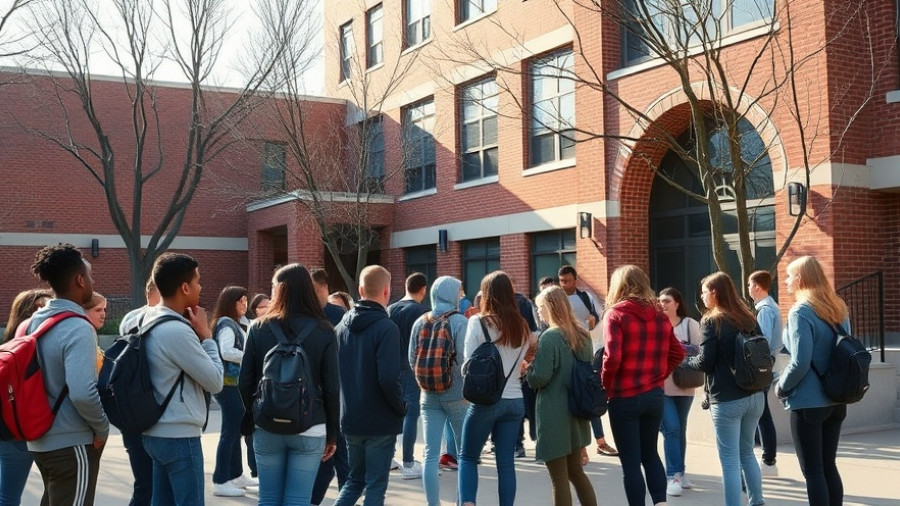
Illinois Takes a Stand: Introducing Climate Education in Schools
In a landmark move for education and activism, Illinois has joined the ranks of states mandating climate education in public schools, becoming the seventh state to implement such a law. With its effective date set for the fall of 2026, this initiative promises to equip students with essential knowledge about climate change and its local impacts. This legal framework not only aims at educating students but also seeks to foster awareness of sustainable practices that can lead to a positive change in their communities.
Why Climate Education Matters Now More Than Ever
The urgency of climate education has never been more pronounced, as Illinois faces increasing instances of severe weather patterns, including tornadoes and flooding. Reports from young advocates like Abhinav Anne highlight the reality that while Illinois may not reside on the coasts, drastic changes in climate are being felt right in the Midwest. This education initiative is vital to preparing students to confront these challenges head-on.
The Role of Educators in Implementing New Mandates
As Illinois educators gear up for this significant shift, the onus lies on them to develop effective, engaging lessons on climate change. Teachers like Laura Stamp have already showcased how local infrastructure can be redesigned for sustainability. Her eighth graders' projects on enhancing bike lanes and public transport safety demonstrate that students are not merely passive learners but active participants in shaping their futures. With the legal mandate to teach climate change across all grade levels, teachers will have the opportunity to integrate these real-world learning experiences into their curricula.
Addressing the Knowledge Gap and Lack of Resources
Despite the enthusiasm surrounding this new law, practical challenges loom. A glaring absence of state funding to support climate education initiatives raises concerns about whether schools will have the resources they need. Education advocates are rising to the occasion, ensuring that materials and courses are made available to help teachers successfully navigate the new requirements. According to the Illinois State Board of Education, climate change topics have been part of existing science standards for some time. However, this law makes it clear that students in every grade need to be informed on the subject, which is unprecedented.
Equity in Climate Education
Helen von den Steinen, co-founder of Climate Education for Illinois, has pointed out the importance of integrating concepts of equity and sustainability into climate education. This highlights the need for students to understand the diverse impacts of climate change on various populations, making education not just about the science but also about social responsibility. This approach aligns with trends seen in states like California and New Jersey, where equity frameworks are being blended into educational mandates.
The Path Forward: Opportunities for Students
This new law is not simply about teaching facts; it's also about inspiring the next generation of climate leaders. By engaging students in climate education, Illinois schools have the potential to cultivate a group of informed citizens ready to tackle climate issues beyond the classroom. Advocates believe that with the right resources and educator training, students will emerge as proactive advocates for their communities, ready to address climate challenges with innovative solutions and community cooperation.
Ultimately, the adoption of climate education in Illinois schools represents a pivotal step towards a future where young people are given the tools to understand and combat the climate crisis. As the state looks ahead, it's clear that informed and passionate students may very well be the architects of a more sustainable world.
 Add Row
Add Row  Add
Add 




Write A Comment